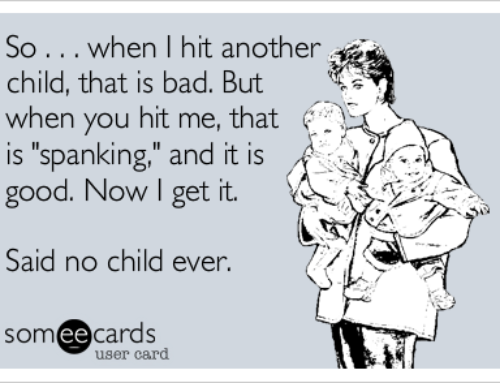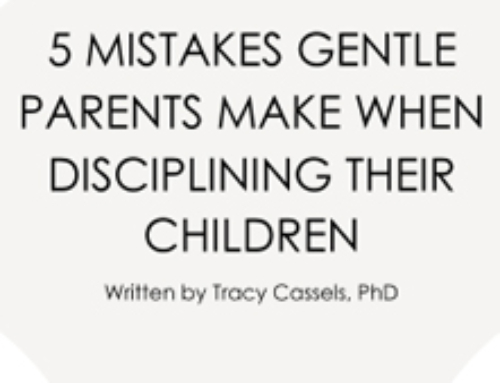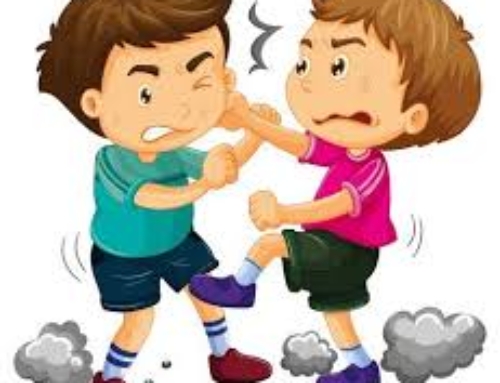Factors of Interest
While more recent findings—considerate of the definition of spanking and considering the frequency and ‘harshness’ of the act—support the negative outcomes previously associated with spanking, it does not mean that there are not groups or factors that may dampen (or accentuate) these effects. First, the role of race has been prominent in this discussion, with some researchers suggesting that spanking is more common amongst African American parents and thus the negative effects would be less (the normative effect) A second factor related to this idea of the normative effect of spanking behaviour is religion, specifically certain Christian denominations. With several biblical quotations used to justify the corporal punishment of children (e.g., “He that spareth his rod hateth his son: but he that loveth him chasteneth him betimes”; “The rod and reproof give wisdom: but a child left to himself bringeth his mother to shame”), it is not uncommon to hear of spankings and other forms of corporal punishment amongst those who are conservative in their religious beliefs (for a rather extreme example, see the advice doled out by Michael and Debi Pearl in ‘To Train A Child’). While there are debates around the use of the bible to justify spanking and other punishments (with religious folks falling on both sides), some have postulated that the use of spanking as a form of love may buffer the negative effects of spanking found in other groups. One study has examined the effects of spanking by various religions and found that while most children showed the expected pattern of adverse outcomes from spanking, children of mothers who mothers who belonged to conservative Protestant groups in the US did not show these adverse effects[6]. Given the results were only for one specific denomination, it is unclear the mechanism behind this protective factor, but early evidence suggests a possible caveat to spanking outcomes. Historical/Evolutionary Considerations One of the comments typically brought up in support of spanking is that it is a time-honoured tradition. That cultures for thousands of years have used physical punishment in child-rearing and we have not only survived but thrived. And as someone who focuses on historical and cross-cultural contexts with respect to other parenting practices, it would be silly to ignore it herein. Let me first iterate that my view of history is predominantly focused on smaller tribal communities—after all, the adage “it takes a village to raise a child” includes village and not city for a reason. Larger communities tend to be more violent and more disconnected, a problem when considering parenting and the support needed to raise the next generation. So when I consider physical punishment, I started to examine Aboriginal culture in Canada, where I live (after all, they have lived in this country for over 10,000 years in smaller groups and without running into many problems before Europeans came and settled). I’m no expert and I will be the first to admit that and would welcome any input from those who are Aboriginal and have far more knowledge than I. However, I have been able to speak with several acquaintances who are actively involved in Aboriginal culture and affairs who assure me that physical punishment is not and was not a part of Aboriginal culture. That peaceful parenting is indeed a long-standing facet of Aboriginal parenting. This has been reiterated in visits to museums in the area and listening to various talks by Michael Chandler, a professor emeritus at UBC who specializes in Aboriginal issues. It has also been confirmed in various scholarly writings[10][11]. In fact, even today, when the Aboriginal culture in Canada has been hurt by years of systematic government infringement and children are disproportionately involved in the Child Welfare System, the reasons are rarely to do with abuse[10]; relative to non-Aboriginal and other minority groups in Canada, physical abuse remains a small fraction of the reasons for child maltreatment (16% for Aboriginal children versus 34% for non-Aboriginal children and 46% for other visible minorities). I cannot speak for every Aboriginal culture or every smaller tribal culture. I am sure there are several that include regular physical punishment of children. However, knowing what I know about the history of Aboriginal culture in Canada, I feel confident that I am not falling short on placing a no-spanking view in a cross-cultural and historical context. Just as not all small tribal cultures utilize all of the methods that comprise Evolutionary Parenting, not all are expected to be spanking-free, but enough are that I feel the roots of peaceful parenting extend back far enough into history and span various cultures to support the emergence of a societal shift away from corporal punishment. Thanks to the concerns raised in Dr. Gershoff’s 2002 meta-analysis, much of the recent research on spanking has become better and more specific to the question at hand. Even with these changes, the research continues to show long-term negative outcomes associated with spanking. Interestingly, there is some evidence that the conclusion is somewhat nuanced. Specifically, when very mild and infrequent spanking was examined, no long-term negative outcomes were noted. Similarly, if the children belonged to families who identified as conservative Protestant (and who were actively involved in that religious community), the negative effects found in other groups did not seem to appear. A factor previously thought to be important – race – has been shown to have no buffering effect when looked at across multiple studies, and age has proven to be key, with younger children showing potentially some of the most deleterious effects (and starting the cycle of spanking → aggression → more spanking → more aggression). One thing that is clear is that frequent and harsh spanking are associated with negative outcomes, regardless of group, age, or other factors. And in turn what becomes deeply concerning is the finding that mild spanking increases the risk for later harsh spanking or other forms of abuse up to seven-fold. To me, this is paramount because no matter how much one may want to say that mild spanking is not associated with negative outcomes, it is associated with later behaviour that puts a child at risk of later abuse, and it is particularly problematic for younger children. I believe we have a duty as a society to protect children when it seems clear that harm is coming their way. For every parent who is able to spank lightly and infrequently without ever having it turn into something more, there are even more parents who cannot do this and for whom one light spanking is a path that leads towards abuse; and though abuse is illegal, it means things have to get that bad before there is any intervention on behalf of the child. So while taking away parental rights is something I am generally against, when not doing so means that more children are at risk of abuse, I don’t think we can afford to not do anything. [1] Lansford JE, Alampay L, Bacchini D, Bombi AS, Bornstein MH, Chang L, et al. Corporal punishment of children in nine countries as a function of child gender and parent gender. International Journal of Pediatrics 2010; Article ID 672780. DOI: 10.1155/2010/672780. [2] Mulvaney MK, Mebert, CJ. Parental corporal punishment predicts behavior problems in early childhood. Journal of Family Psychology 2007; 21: 389-397. [3] Berlin LJ, Ispa JM, Fine MA, Malone PS, Brooks-Gunn J, Brady-Smith C, Ayoub C, Bai Y. Correlates and consequences of spanking and verbal punishment for low-income white, African American, and Mexican American toddlers. Child Development 2009; 80: 1403-1420. [4] Gershoff ET, Lansford JE, Sexton HR, Davis-Kean P, Sameroff AJ. Longitudinal links between spanking and children’s externalizing behaviors in a national sample of White, Black, Hispanic, and Asian American families. Child Development 2012; 83: 838-843. [5] Durrant JE. Physical punishment, culture, and rights: current issues for professionals. Journal of Developmental and Behavioral Pediatrics 2008; 29: 55-66. [6] Ellison CG, Musick MA, Holden GW. Does conservative Protestanism moderate the association between corporal punishment and child outcomes? Journal of Marriage and Family 2011; 73: 946-961. [7] Zolotor AJ, Robinson TW, Runyan DK, Barr RG, Murphy RA. The emergence of spanking among a representative sample of children under 2 years of age in North Carolina. Frontiers Psychiatry 2011; 2:36. doi: 10.3389/fpsyt.2011.00036 [8] Baumrind D, Larzelere RE, Cowan PA. Oridnary physical punishment: is it harmful? Comment on Gershoff. Psychological Bulletin 2002; 128: 580-589. [9] Straus MA, Paschall, MJ. Corporal punishment by mothers and development of children’s cognitive ability: a longitudinal study of two nationally representative age cohorts. Journal of Aggression, Maltreatment & Trauma 2009; 18: 459-483. [10] Blackstock C, Trocmé N. Community-based child welfare for aboriginal children: supporting resilience through structural change. Social Policy Journal of New Zealand 2005; 24: 9-22. [11] Urban WJ, Wagoner JL. American education: a history. New York, NY: McGraw-Hill. 1996.
A final factor is age which has received less attention than race, but more than religion. Most studies have examined the effects of spanking in children older than 2, but the fact remains that spanking of younger children occurs and occurs with some consistency[7]. A few exceptions to this rule of age have shown that the effects on younger children are in line with what has been found in older children, and perhaps even more severe. As previously mentioned, the research using the FFCWS data found that spanking at age 1 was related to externalizing problems at age 3. In another large research study, over 2500 low-income mother-child dyads (from the Early Head Start program) were examined at ages 1, 2, and 3[3]. The use of low-income only mothers controls for variability in SES, though other controls were included (e.g., maternal depression, education). These researchers found that spanking at age 1 was predictive of both externalizing problems at age 2 and cognitive deficits at age 3; importantly, previous aggression and cognitive scores did not predict spanking, thus the results were not due to a cycle in which behaviour led to spanking which then predicted behaviour again. A final study examined spanking in infancy (under 1 year of age) and found spanking at that age to be associated with dysfunctional child stress reactivity, specifically these infants showed higher hormonal stress responses to minor stressors than non-spanked counterparts[8]. This last finding raises concerns over the consequences of very early spanking. That is, a dysfunctional stress reactivity pattern that develops early in life can affect a host of cognitive and social outcomes later in life. Indeed, the effects on stress reactivity are hypothesized to be one mechanism to explain the negative cognitive outcomes associated with spanking[3][9].
Conclusions






Addemdum to my response on page one (because my cell was being buggy and wasn’t showing this post until after I commented on the 1st one), is I *do* belong to that Biblical Christian (Protestant) subset. All the well behaved kids I grew up with in my community and church, and those I continue to be around in general today, all were/are spanked and all lack all these negative (excepting we all find a little tiff between kids normal nor ‘bad’) things people always use to protest spanking. So I freely admit, with such overwhelming evidence to the contrary those studies finding harm to kids from spanking just stink of junk science. It had never occured to me that it might be a culturally (Biblical Christianity certainly being a distict subculture) determined thing. But that bears consideration.
I was wondering about this when I came across the research. And the real distinction was conservatism – just being a “religious” household did not do much at all (rightfully so as many people claim a religion and very rarely follow much of any of it). I admit I’m fascinated by that implication, wondering what in that subculture could be serving as the protective agent. Given the research does look at others with the same definitions of spanking (not as well-defined either, left to parental report) and found effects for others but not this group, it suggests (preliminarily) that the other results hold, but that there’s something special going on. Do you think it has to do with the idea that spanking can be out of love in the bible? I’m very curious to hear your thoughts.
I expect the Biblical notion of love, being self-sacrificing and interested in what’s best for someone not what makes them happy in the moment, would have something to do with it, but I would say it is more properly related to the Biblical notion of truth and sin. A child in a Biblical Christian home is going to learn very young that we earn punishments, from “the wages of sin is death” to “foolishment is bound in a heart of a child” something *we* do causes negative consequences. My parents didn’t *give* me a spanking, I *earned* it. They didn’t spank me because they hated me, were angry at me, or disliked me, just like we don’t suffer the consequences of sin because God hates us, is angry at us, or dislikes us, I got spanked because *what I did* earned that outcome. Therefore I knew from a very young age that whether I got spanked or not was 100% up to me. Add that to the Biblical notion of truth, namely that Truth exists as an absolute that we can know, we know what we should and should not do, we know there is a proper course of things with a proper set of consquences for both good and ill, therefore we can know that our parent’s chastisement is not caprecious, random, or inappropriate, but just and proper, how can you do nought but take that chastisement and learn from it and use it to incourage yourself to stop earning such.
I always present spanking as an “if-then” statement to my kids “if you do X then you will get spanked”. You can see them thinking, weighing, deciding. They both know that their actions bear consequences, stuff doesn’t just randomly happen, they aren’t victims or just lucky when it comes to how they are treated, they justly earn what happens to them (the most difficult thing to explain to them isn’t sex or babies or death, it’s those instances where bad stuff does happen despite them doing nothing wrong, like when someone stole Thomas’s bike) having to explain the greater notion of a sinful world isn’t easy to a 3 year old and have them comprehend), be it a candy for sitting quietly or a swat for hitting their sibbling without cause. Certainly those (negative) consquences mustn’t always be a swat or a spanking, but I certainly am not going to ignore what God (and history) has deemed a proper one, especially when it makes such a larger impression on a human brain than other options. It’s not nearly so easy to forget a spanking as it is to forget other punishments. The human brain is hardwired to remember instances that cause pain and to avoid them far more than other situations.
I grew up in one of the Biblical, conservative (and immigrant) households where severe physical punishment was commonplace in the community. Spanking with objects, slapping, long drawn out whippings, etc. They didn’t help much in doing anything but creating a lot of underground, hidden behaviors from parents (there is a subculture within many of the “conservative Protestant” communities of a lot of premarital sex, including sex for pay, drugs, and other unwanted behaviors) from an early age. None of my siblings (or myself) are regilious. Both of them were way more rebellious (dealing drugs, stealing, etc.) than I. We all married non-religious people outside of our immigrant community. So much for social reproduction theory.
The problem with your “If X than Y” reasoning is that you think that your children are perfectly capable of controlling their behavior at all times, when developmentally, we know that this is not true. Even teenagers, often sleep deprived because of punishing school/activity schedules and raging hormones, cannot always rationally calculate their behavior. Behavior instead may be the result of in the moment physical needs and emotions.
It’s unfair of you to expect your children to behave in a way that fits your needs, and then use violence to force them to comply. You had your children, but they never chose nor asked to be born.
I know that individual stories don’t count much when looking at aggregates, but… my story… I grew up in a conservative Protestant (Pentecostal/Charismatic) home, and I was only spanked three times in my entire life. I was a “good” child and seldom “needed” it. But those few times I did get spanked really traumatized me. I still remember them and can bring up the feelings of rage, fear, and shame they produced. I would say that spanking did, actually, negatively affect the rest of my life, even though I’m part of the group that “should” be safe–infrequent spankings, and conservative Protestant household.
I wish more studies would look at how spanking affects children of varying personality traits. I am someone with “Sensory Processing Sensitivity”– I’m very sensitive, both emotionally and physically. I wonder if the spankings I got affected me so much because of my deeply sensitive nature, whereas my happy-go-lucky brother was spanked almost daily, and seemed not to care at all.
I remember reading a study once about how children who were spanked were x number of times more likely to develop y problem… If I remember right, with girls, the main problem was depression, while with boys it was aggression. (My brother WAS very aggressive, actually.) I often wonder if my lifelong battle with depression might be at least partially linked to the trauma of being spanked. I’m not saying it’s all due to that, of course. But still… Who knows…
I totally agree that we need research on personality traits as well. I imagine – like everything parenting-related – it has a huge interaction influence on the outcomes.
On a personal note, I’m so sorry you had to deal with that. As always, the research presents averages and does not speak to individual differences 🙁